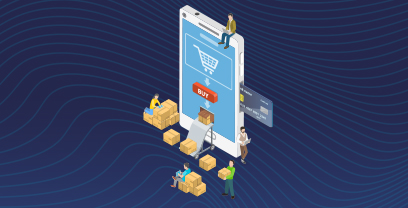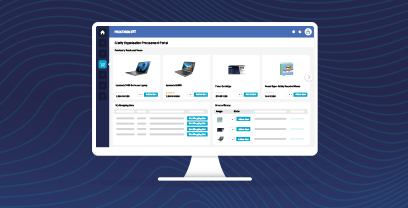Blog »
Frictionless P2P: A Dream or Reality?

Author: Hubert Verweij, Head of Procurement Transformation, Capgemini Invent Sweden and Finland
Previously published on Capgemini’s website
Nowadays, Procurement practitioners primarily talk about emerging topics like the reduction of scope 3 emissions, supplier-enabled innovation and supply risk management. These discussions are fed by researchers and thought leaders who emphasize the changing role of Procurement to unlock value potential, mitigate risks and reduce total lifecycle costs. Of course, I can only agree with their insights and the critical role of Procurement in solving business and societal problems, but one process is often overlooked. Procure to Pay is the process where much of the value potential is actually created…or where much value is leaking!
Many large organizations implement a Procure to Pay platform with the aim to deliver efficiency, visibility, simplicity, and compliance. The ultimate goal is to realize contracted savings and ensure that suppliers ‘perform to contract’. You could ask the question: how difficult could that be with P2P platforms that reached a mature status now?! In practice, the greater part of organizations is not satisfied with the adoption and performance levels of their P2P practices. The full potential of the contract is not realized while internal stakeholders and suppliers are complaining about the lack of speed, simplicity, and reliability. Calculating value leakage is a complex assignment, but we estimate that value leakage amounts to 2-4% of total spend reflected by:
▪ Over, early, and late payments
▪ Unmaterialized rebates & discounts
▪ Hidden costs due to late deliveries or quality issues
▪ Maverick buying
▪ Claims & disputes
▪ Internal re-processing costs
The slightly good news is that most organizations do not know what their value leakage is: what you do not see or know, does not exist. But clearly represents a significant improvement potential if organizations get more grip on their P2P practices. In the blog, I will share ten best practices that any organization can adopt when implementing or improving their P2P practices.
1. Procurement policy as a strong instrument to execute your P2P strategy
Policies are often seen as administrative documents with no added value. They contain much procurement jargon, are lengthy by nature, and are owned by a supportive function. As a result, hardly anybody knows the content and there is no structured monitoring and follow-up on compliance. What companies caught in this trap fail to realize is that if well designed and communicated, a procurement policy provides a great measure to realize your P2P goals and put your strategy into execution. We recommend using simple language which can be tailored to user groups. Some companies create separate documents for the business versus procurement community considering their specific role and requirements in the P2P process. More important is how communication about policies is structured and executed. We strongly recommend starting at the top where the CFO and CPO together sign-off and launch the policy to executive management after which communication is cascaded top down through the organization.
2. Procurement as end-to-end process owner
With so many stakeholders engaged in the P2P process, one function must take the lead in preventing functional sub-optimization. In my opinion, it is Procurement that is best positioned to fulfill this role being the organization’s ultimate relationship owner towards suppliers. This does not mean that Procurement is responsible for the execution of any activities but is given the authority to optimize
processes so that the interests of the entire organization are protected. Procurement also takes the final decision in case of conflicting priorities with suppliers.
3. Easy to say, but go for standardization
Being involved in many P2P engagements, I hardly encounter any organizations that do not aim for the standardization principle at the beginning of a P2P initiative. However, this mindset often changes when the initiative progresses. People try to convince me and, more importantly, their colleagues that their organization is special when it comes to P2P, but their arguments are often driven by opinions while trying to keep the current way of working in place. As a result, platforms are tuned to the current ways of working resulting in customizations and many exceptions which embed much complexity in running and improving P2P practices. My personal advice: don’t customize your P2P platform and fully adapt your ways of working. Exceptions relate to external reasons only like national legislation. Sticking to the standard across your organization will save you costs, frustration, and dissatisfied internal and external stakeholders. Your leadership team plays a central role in steering this principle, from the start when launching the procurement policy and during operations.
4. Treat your supplier as the expert, also in P2P-related matters
Suppliers exactly know what they will sell to you, including product & price information. With typically 10.000+ suppliers, it is undoable for any organization to keep this information up-to-date without a large administrative organization. I recommend your organization to fully embrace the concept of supplier-service when it comes to master data and content management. Most of the procurement platforms provide solid functionality to enable supplier self-service if your organization, no matter if your organization has one or multiple ERP platforms. Supplier self-service does not mean that your organization is completely at the mercy of the supplier, but it requires another approach to managing supplier relationships. Trust plays a central role where past collaboration and experiences often jeopardize trust levels. When implementing supplier self-service, spend sufficient time on engaging the supplier and establish a structure to monitor product & price information changes by the supplier.
5. ‘Fit for Purpose’ buying channels with guided buying
The products and services, that your business stakeholders need, are so diverse resulting in different process requirements as well. The way how these needs are managed are defined as buying channels. Buying channels take into account different product characteristics (e.g. predictability, commoditization, complexity, importance, etc.) while optimizing the needs for efficiency, simplicity, visibility, and compliance. Any product or service is assigned to a preferred buying channel which is embedded in any enabling technology. But there are two issues in practice. First, co-workers do not know which buying channels are relevant and as a result, often follow the channel that is most convenient and easy for them. Secondly, co-workers have difficulty finding the right products and services on any platform and choosing the easiest solution again. As a result, purchases are linked to the wrong sub-category which jeopardizes the quality of spend analyses while it creates rework in the downstream process. While enabling technology is mature, usage of the right buying channel, and thus deploying the most cost-effective process scenario, can only be realized through blended and tailored training approaches during and after the project phase. Guiding buying functionality definitely helps in selecting the right channel, but it still maturing. Again, compliance monitoring is key to changing behavior and improving adoption levels.
6. Centralize operational procurement
With Procurement as an end-to-end process owner, your organization will keep a grip on spend and compliance. In case a call-off against a contract by a requestor is not possible and a sourcing activity is required, I recommend centralizing these activities so that all spend goes through the hands of Procurement. Centralization of operational procurement activities enables Procurement to prevent maverick buying while it brings efficiencies to other disciplines, ensures compliance to policies, and
drives cost savings. If operational procurement activities are well-established and stable, your organization can consider outsourcing these activities to a third party, including other transactional activities like accounts payables and master data management. Too often, organizations are outsourcing operational activities with the hope that the third party solves all existing process frictions.
7. One integrated S2P platform enriched by RPA
I personally believe that any global vendor (e.g. Ivalua, Coupa, SAP Ariba, Jaggaer) provides solid functionality to properly manage the end-to-end Source to Pay process. Some vendors provide above average functionality in S2C versus P2P, while other vendors excel in specific industries. If possible, I recommend your organization to implement the full suite of one S2P vendor minimizing the need to integrate while working from one data model. During your RfX process, pay much attention to the latter point, because the S2P suites are not always as integrated as presented. If there is a good reason to select best-of-breed applications from different vendors, I recommend realizing full integration for several reasons. Lack of integration means lack of comprehensive insights, manual work, and thus errors and additional costs, and difficulties to manage contract and process compliance. Integration also helps you to reduce value leakage so ensure that integration enables you to match in legal & operational contracts, price lists and/or catalogs, purchase orders & goods receipts, invoices & payments, and complaints, disputes & claims. After standardization and optimizing your existing platform(s), take any opportunity to replace manual and repetitive work with robotization. RPA technology is also a good measure to automate activities if integration between core procurement platforms is lacking.
8. Leading & lagging KPIs focused on value chain optimization
Most KPIs, that are used to monitor P2P performance, are typically not key by nature and encourage functional sub-optimization. With establishing end-to-end process ownership at Procurement and structuring cross-functional collaboration between Businesses, Procurement, and Finance, it is also time to revitalize your performance measures. Personally, I am in favor of the Balanced Scorecard concept which provides a great opportunity to link lagging measures (financial and customer satisfaction KPIs) with leading measures (process and learning & development PIs). The latter is a much stronger predictor of future performance levels but is usually overlooked. Another perspective is to bring the interests of different stakeholders (e.g. Businesses, Procurement, Finance, and Suppliers) together which provides a 360 performance dashboard and enables your organization to optimize decision-making that is good for your organization and not for one functional discipline only. I also mention here the adoption of process mining as a measure to deeply understand the underlying root cause of low-performance levels. Performance dashboards and process mining go hand-in-hand during continuous improvement.
9. Prioritize continuous improvement from day one
Being engaged in so many P2P engagements, I noticed that performance management is often deprioritized. Starting with good intentions, available capacity and knowledge is (un)consciously focused on process development, system configuration, and training & communication so that new platforms can ‘go live’ according to planning. But lacking the appropriate (K)PI dashboards, there is no measure to show success to the organization or to drive behavior if performance levels are below par. As a result, co-workers complain about and blame the system while the underlying root cause is related to lack of adoption. My recommendation is to give the development of (K)PI dashboards priority from day 1 and ensure that a cross-functional governance structure is established at the go-live date where business stakeholders, procurement, and finance together drive continuous improvement.
10. Leader-led change to maximize adoption levels
Anybody has an opinion about procurement, anybody wants to buy, and anybody wants to buy without the Procurement department. Although this statement is somewhat exaggerated, I want to make a point that following a people-centric approach is key to maximizing adoption levels and ensuring that
your objectives to deliver efficiency, visibility, simplicity, and compliance are actually realized. Leadership plays a central role by providing the right direction and support (“allowed to change”) and showing the right example behavior. How often does it happen at your organization that a CxO asks his secretary to call his preferred supplier without a purchase order? When the conditions for success are set by management, co-workers should get sufficient time to get trained and practice new ways of working (“capable to change”), while tailored communication and coaching will increase appetite (“willingness to change”). The same logic applies after the project when new co-workers get engaged in the P2P process and keep adoption and performance to expected levels.
I hope this set of ten best practices gives you and your organization ‘food’ for thought’ when you are implementing and improving P2P practices. Capgemini Invent developed an online methodology and tool to map any friction within your organization. Please contact me if you are interested to get more grip on your P2P process.
Hubert Verweij has 20+ years of Procurement experience working as a management consultant and working in the industry. At Capgemini Invent, he is the Head of Procurement Transformation in Sweden & Finland where he led assignments around digital procurement, sustainable procurement, and strategic procurement. Capgemini has partnerships with Ivalua, Coupa, and SAP Ariba–helping their clients implement S2P platforms and improving the adoption of their S2P platforms.

Staff Contributors
Contributing writers from inside and outside Ivalua occasionally add items and information to this blog. We are a team who share an interest and curiosity about procurement and spend management.




